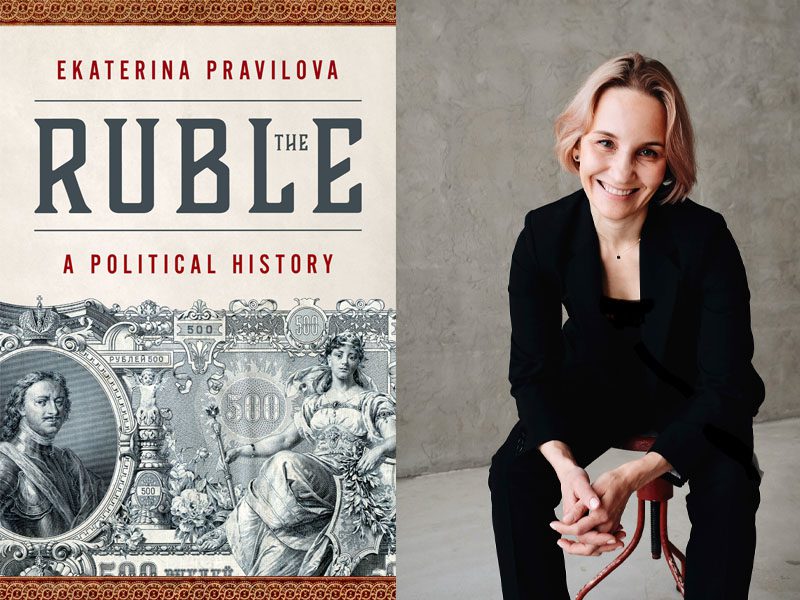Ekaterina Pravilova is Rosengarten Chair of Modern and Contemporary History, professor of history, and director of the Program in the Russian, East European, and Eurasian Studies. Her book, “The Ruble. A Political History” was published in June 2023 by Oxford University Press.
How did you get the idea for this project?
If someone were told that I wrote this book by accident, they might find it hard to believe. After all, a few years of archival research culminating in a 560-page volume hardly seems like an unintended endeavor. However, initially, my focus was different. I delved into the history of authenticity, fraud, and trust in imperial Russia. It struck me that the state, which issued paper bills with a promise to exchange them for gold and silver coins, was often perceived as the biggest fraudster since the Russian currency was largely unconvertible. Intellectuals, reformers, and liberals viewed this state-inflicted deceit as the root of numerous societal ills – moral decay, a breakdown in trust between the government and the people, and widespread social injustice. This realization prompted me to shift my focus from fraud and authenticity to the subject of money, leading to the creation of “The Ruble.” There is also another, more personal reason behind this book. “The Ruble” serves as a tribute to my teacher, the Russian historian Boris Ananich (1931-2015), who was a pioneer in the study of Russian financial and political history.
How has your project developed or changed throughout the research and writing process?
My understanding of the imperial ruble was inevitably shaped by contemporary events. In modern Russia, money is a tool for political control, expansion, and warfare. The parallels between the monetary attitudes of Tsarist Russia and Putin’s autocratic regime were striking, particularly in the rhetoric surrounding the ruble’s rate vis-a-vis “Western” currencies, the costs of imperial prestige, and the financial rights of citizens. Observing the Russian autocracy from the 2010s to the 2020s provided valuable insights into the logic of the imperial regime from the 18th to the early 20th centuries.
What questions for future investigation has the project sparked?
“The Ruble” is not your typical financial history book. It’s a narrative about the Russian state, popular culture, the ideas of liberty, and the practices of sociability. It demonstrates that concepts like dignity, honor, trust, and truth have histories, which can be explored in various ways, including through the lens of money. This approach to economic history allows for a broader exploration of past cultures and institutions.
Why should people read this book?
Readers interested in the history of the Russian Empire and the early Soviet Union will find alternative interpretations of key events in Russian history – from the reign of Catherine the Great and the Napoleonic Wars to Nicholas I’s nationalism, the Great Reforms of Alexander II, the Russo-Japanese and First World Wars, the 1917 revolutions, and the economic policies of the 1920s. “The Ruble” delves into the lives of emperors and their ministers, writers and journalists, capitalists and peasants, and their intricate relationships with the ruble. It also offers an analysis of how monetary theories and financial reform ideas influence political institutions and how political regimes shape the nature of monetary systems.
Learn more about other publications by Princeton University faculty in the humanities by exploring our Faculty Bookshelf.
















